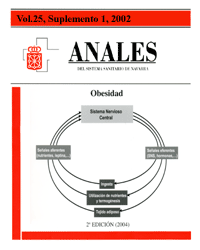Adipose tissue: a storage and secretory organ
DOI:
https://doi.org/10.23938/ASSN.0812Keywords:
Obesidad. Índice de Masa Corporal. Clasificación.Abstract
The adipose tissue plays a fundamental role in maintaining the energy balance in mammals. During periods of high energy intake, the adipocytes store energy in the form of fat (triglycerides), which can be mobilized as free fatty acids during energy deprivation. Adipose tissue can no longer be considered only as a passive tissue that simply stores energy. Some recent discoveries have made it evident that this is a very active endocrine tissue that secretes important molecules related to different processes such as the immune response (TNFa) the regulation of food intake and expenditure of energy (leptin, Acrp30/adipoQ) and the vascular function (angiotensin and plasminogen activator inhibitor type 1). Alterations in the growth, development and function of the adipose tissue might therefore be involved in the development of different pathologies such as obesity, insulin resistance and type 2 diabetes, hypertension and atherosclerosis. A deeper understanding of the adipose tissue (morphology, development-adipogenesis, role in the metabolism and in the regulation of body weight, endocrine functions...) is needed for an adequate study of the underlying aspects in the development of obesity.Downloads
Downloads
Published
How to Cite
Issue
Section
License
La revista Anales del Sistema Sanitario de Navarra es publicada por el Departamento de Salud del Gobierno de Navarra (España), quien conserva los derechos patrimoniales (copyright ) sobre el artículo publicado y favorece y permite la difusión del mismo bajo licencia Creative Commons Reconocimiento-CompartirIgual 4.0 Internacional (CC BY-SA 4.0). Esta licencia permite copiar, usar, difundir, transmitir y exponer públicamente el artículo, siempre que siempre que se cite la autoría y la publicación inicial en Anales del Sistema Sanitario de Navarra, y se distinga la existencia de esta licencia de uso.








